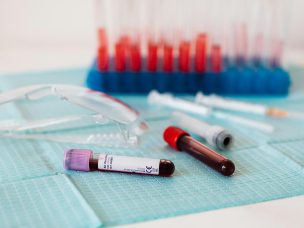Many lives could be saved if all patients were given equal access to lung cancer screening. Lung cancer incidence rates, treatment, and outcomes vary based on race, ethnicity, and sex. Previous research has identified disparities that result in worse patient outcomes across populations. Lung cancer screening has the potential to lower the mortality rate for lung cancer.
The gap in healthcare will only worsen if all populations do not receive equal access to this screening. The American Thoracic Society sought to prepare a statement and propose strategies to combat these disparities. By identifying the disparities that currently exist, the medical community strives to lessen the gaps in health equity.
A panel of medical experts reviewed patient data on primary care, pulmonology, health behavior, smoking cessation, and epidemiology services. They also reviewed literature about historical disparities in cancer screening and the current evidence for disparities in lung cancer screening.
Current guidelines for lung cancer screening eligibility does not consider racial/ethnic, socioeconomic, or sex-based differences in patient risk of lung cancer. Vulnerable populations have been proven to be at an increased risk due to multiple barriers, which further exacerbate the disparities that exist for patients with lung cancer.
The benefit of cancer screening was shown to be more favorable in African Americans than Caucasian Americans. Screening was also shown to be more beneficial for women than men. Vulnerable populations face barriers that prevent them from receiving lung cancer screening that could potentially save lives. Economic barriers exist, including the cost of services that prevent vulnerable populations from receiving this screening.
Individuals who smoke were shown to be less educated and lack awareness of lung cancer screening. It was discovered that tools have not been designed to help those with low health literacy. These disparities exist at multiple levels in U.S healthcare.
We can conclude from this data that mortality rates could decrease if vulnerable populations were given equal access to lung cancer screening. Current methods fail to identify high-risk groups due to guidelines that are not designed with patient race, sex, or socioeconomic status in mind.
A call to action is made for healthcare professionals to acknowledge these disparities and develop strategies to improve access to lung cancer screening for vulnerable populations. Primary care physicians must also educate patients on the importance of early lung cancer screening to improve outcomes for vulnerable populations [1].
Source:
[1] Rivera, M. P., Katki, H. A., Tanner, N. T., Triplette, M., Sakoda, L. C., Wiener, R. S., Cardarelli, R., Carter-Harris, L., Crothers, K., Fathi, J. T., Ford, M. E., Smith, R., Winn, R. A., Wisnivesky, J. P., Henderson, L. M., & Aldrich, M. C. (2020). Addressing Disparities in Lung Cancer Screening Eligibility and Healthcare Access. An Official American Thoracic Society Statement. American Journal of Respiratory and Critical Care Medicine, 202(7), e95–e112. https://doi.org/10.1164/rccm.202008-3053st










